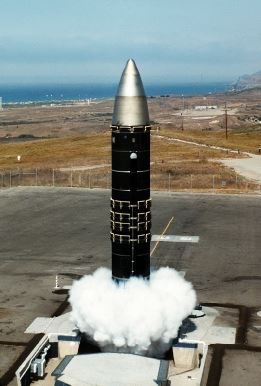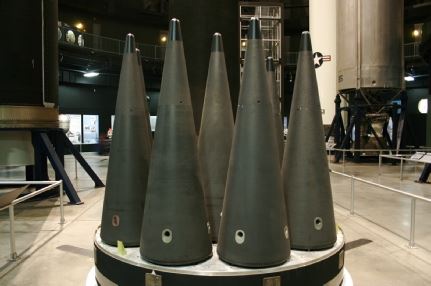Peacekeeper, LGM-118A The Peacekeeper was originally developed as the Missile-X (MX) in the 1970s, with a wide variety of fixed and mobile basing options considered. A Rail Garrison mode was tested, with missiles on special trains that would deploy from the host base (garrison) at increased threat levels and roam the country awaiting launch orders. One basing method used numerous shelters per missile, with each missile rotated randomly among its shelters (sometimes called the shell game or racetrack pattern). Another used large pools of water with the missiles stored under the pools for added survivability, and there were other multiple shelter ideas evaluated. An air-mobile option was also considered and tested using a Minuteman and C-5A. Peacekeeper was ultimately deployed in 50 Minuteman silos in 400th Missile Squadron at F E Warren AFB, WY. Peacekeeper was operational from 1986 until it was deactivated in 2005. |
|
| LGM-118A was a three-stage solid fuel missile with a post boost vehicle that carried up to ten independently targeted warheads. The missile was cold-launched from the silo, with the engines firing shortly after the missile left the silo. It weighed 192,300 pounds, about two and a half times a Minuteman. The first test flight of Peacekeeper was on 17 June 1983. The first flight of 10 missiles achieved initial operational capability in December 1986. |
Peacekeeper was operated and maintained in much the same manner as Minuteman. New base facilities were required for missile assembly before silo installation, along with new support equipment to transport, install and maintain the silo-based version. 50 silos and 10 launch facilities at F E Warren AFB WY were modified to accommodate the Peacekeeper . One Missile Alert Facility, Q01, is now property of the state of Wyoming and is being opened as a museum. |
|



